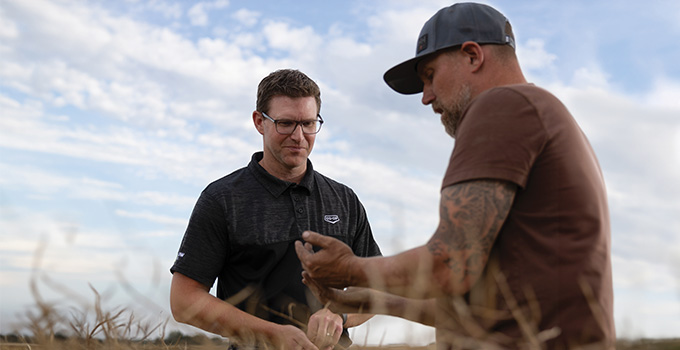In a single gram of soil, there are four billion bacteria, one million fungi and 300,000 algae alive. Multiply that over an entire farm and it becomes clear that soil is your top asset. Without fertile soil, every farm would cease operation — it’s that important. As such, a strong understanding of soil fertility is critically important, especially in a world where the population only increases along with food demands.

“It’s literally a living, breathing ecosystem out there, so it’s important to keep all these micro-organisms as healthy as possible,” said FCL Grow Team Advisor for Southern Saskatchewan, Ryan Elliott. “Without those micro-organisms, we would not be able to sustain life above ground,” he said.
To keep soil in tip-top shape, Elliott broke down the simple things farmers can do today to keep their dirt as fertile as possible.
What is soil fertility?
Simply put, soil fertility is the soil’s ability to sustain plant life. Practically, it’s so much more. “It’s really one of the pillars of the farm,” said Elliott. “If you have healthy soil, that’s just going to lead to success and more profitability. Without healthy soil, it’s going to be very difficult for your farm to be able to grow or raise healthier, profitable crops. It really is the backbone of your farm.”
Test, test, test
The number one thing all farmers should do today is test their soil. Elliott suggests a farmer take 10 to 12 cores per field to get a representative sample. In a little time, you will understand exactly what your fields are sufficient and deficient in for micro- and macronutrients.
A test also reveals soil pH and electrical conductivity (EC) rating, which outlines which crops can be grown on that field and how we can best manage those fields to increase soil health and profitability.
“That’s really going to help you to determine what strategies will make you the most profitable in coming years,” he said.
Crop rotation
A key component of healthy soil is an equally healthy crop rotation. Certain growing regions have tighter one-in-three rotations, but Elliott suggests a one-in-four, or longer, is best to maintain and build up fertility.
“With rotations, you’re giving your soil a break and that helps interrupt disease cycles, too,” he said. “That’s going to help you combat herbicide resistance and allow you to use different modes of action in your field for healthier crops.”
He understands the draw of planting canola but recommends farmers look into a pulse or lentil to get into the mix. Pulse crops, for instance, fix atmospheric nitrogen through rhizobia. This not only saves producers on fertilizer costs, it also boosts the crop that follows it, as well. For those with animals, planting feed crops like alfalfa or corn is also beneficial as it breaks up the typical cereal-canola cycle.
Back to basics
Elliott encourages farmers to continue to look at ways to be on the land less while not compromising on crop quality, such as zero or minimum tillage. Fewer in-field machinery passes means healthier soil. “Over time, you’re going to be able to increase your organic matter content within your soil zone,” he said.
If farmers can increase their organic matter, the results can be dramatic. Not only does healthy soil decompose organic matter, releasing key nutrients to growing plants, Elliott says for every one per cent increase in soil organic matter, it leads to a four per cent greater water-holding capacity in the soil.
“That doesn’t sound like a lot, but in a drought year where you don’t have as much rainfall, that could be the difference between having a profitable crop and being in the red. We don’t want to just farm for tomorrow. We want to be able to farm for the next generation, too.”
Visit your local Co-op Agro Centre or get in touch with a Grow Team member to get personalized agronomic advice for your farm.
- MORE: Grown with Purpose

